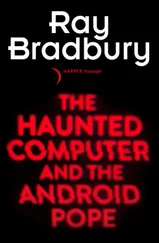Adams even wrote a game for the Sphere, but just as he submitted the game to Programma, a Los Angeles software publisher, Sphere folded, along with its software market. Adams was far from discouraged, however. He went out and purchased another microcomputer, and this time he made a more fortunate selection. He bought the same machine I had—the Radio Shack TRS-80 Model 1.
There was a mainframe computer in the office where Scott worked at the time, and he often used it to play the famous Crowther and Woods game Adventure. But when he tried to get his friends in to play this game that could keep him absorbed for hours at a time, weeks on end, he found that his friends didn’t qualify for security badges and were therefore denied access to the computer. So in 1978 he resolved to write a version of Adventure that would run on his microcomputer. Everyone told him it was impossible to shoehorn that big mainframe-originated program into the tiny memory space of his TRS-80.
Scott managed to complete his microcomputer version of Adventure Land despite the opinions of skeptics. His wife didn’t enjoy computer widowhood, however. At one point she became so furious at his abandonment of her that she took all his program cassettes and put them into the oven. Fortunately, she neglected to turn the oven on.
When his program was finished, Scott showed it to his local computer users’ group, which he had founded in 1977. They loved it and suggested that he sell it. The problem was that TRS-80s were sold only in Radio Shack stores, and those stores did their buying through corporate headquarters in Fort Worth, Texas. Unfortunately, one of the things corporate headquarters wasn’t buying back then was third-party soft ware. It wasn’t handing out lists of stores, like Apple did. either. So there weren’t many publishers selling TRS-80 software with any success. Scott and Alexis decided to start their own company.
Adventure International, they called it, thinking that they would sell adventure games around the world as the microcomputer revolution swept the globe. But their only sales success at the beginning came through users’ groups like the one Scott had started, and through magazine ads. Still, those sales were more than respectable, given that Scott and Alexis not only published the first microcomputer adventure game, but theirs was also one of the first software mail-order businesses in existence. And I can personally testify to its success. My royalty checks from Scott and Alexis were always much greater than those that came from anyone else. It was obvious, to me at least, that they were doing something right.
To expand their business, they started going to trade shows in all parts of the world. Alexis told me that in one year alone they went to thirty-eight shows. The Adventure International booths were very different from most other booths at these shows. Most companies came to trot out their new products and show off their technology. But Scott and Alexis came to sell, and they set up their booths like a supermarket, with row after row of products on display and cash registers at the two exits. Alexis told me that they made more than $30,000 at one of these early shows. The booth decor was usually a take-off on the latest adventure game theme. One year it looked like a gigantic South Pacific grass hut. The next year it was a medieval castle.
Scott and Alexis helped me in more than one way when I started my software career. After Alexis called me to say that she and Scott wanted my permission to ship copies of my Galactic Empire tape, the fact soon dawned on all three of us that publishing programs was a lot harder than we had assumed. That early Empire tape was, as it turned out, riddled with bugs—hidden mistakes in the program that would cause it to work incorrectly or to stop working under certain circumstances. Certainly, before mailing the tape I had gotten the program to function in the first place, but just because a program will start working on a computer is no guarantee that it won’t stop working when a bug comes up later on. In any case, when I sent Galactic Empire to Adventure International, I was unaware that the program had any bugs in it and remained so until the complaints about it started coming in from customers.
We eventually put out twenty-three versions of the program. Scott was incredibly patient with me and understood about debugging from his own experience. And our market was very understanding and patient as well. Our customers were mostly hobbyists, and since the programs were written in BASIC, a simple language that many of them knew, many of the hobbyists probably regarded the bugs as personal challenges. I must have received 200 letters over the next two years, suggesting fixes for and enhancements to the program.
While I was debugging Galactic Empire and programming the next installments in the Galactic Saga series, Scott and Alexis were becoming major publishers in the home computer market. Virtually the only channel available for TRS-80 programmers, they started acquiring more products. They purchased entire lines of TRS-80 software from companies that had discovered how hard it was to find end users. Scott and Alexis didn’t have any trouble finding customers, however. By mid-1983 they had more than 100,000 names on their mailing list and were mailing quarterly catalogues to every one of those names.
The company had indeed grown rapidly since its inception in 1978. In October 1979, when Adventure International moved to a shopping mall, the Adamses opened a retail computer store in the storefront part and ran the software company out of the back. The store prospered, and they opened another one. The Scott Adams Computers retail chain was born. Plans were laid for seven stores, all to be located in central Florida.
Scott and Alexis didn’t stop there. Having attended a lot of trade shows, they had seen how incredibly profitable some of those shows could be for the organizers. So they set up a Computer Expo Division of their empire and successfully produced a number of regional computer shows.
They tried everything, and for a while everything seemed to work for them. But changes were taking place in the marketplace, gradually at first, that would take their toll on the company. The rise of computer-store chains made mail-order less interesting to many computer owners, and it also took a lot of business away from Tandy, the owner of Radio Shack. Most computer stores were stocking Apples and, when they became available, IBM PCs. These were not Scott’s market for software—he and Alexis had never made the impact on the Apple market that they had made on the TRS-80 market, even though they eventually created Apple and IBM versions of most of their products.
Another change was beginning to have a significant impact on Scott and many other software publishers that had been oriented to the home computer market. Having originally been made up almost entirely of hobbyists and game players, the home computer market was becoming more business- and applications-oriented by the early 1980s, and games were becoming a much smaller piece of the software pie. Although Scott and Alexis set up a business products division in 1983, the company’s name remained associated with games, and it was hard to get an audience for AI’s business programs, given the awesome competition that AI faced in that market—particularly in the strong IBM and Apple markets.
But the biggest problem Scott and Alexis faced was the rise of distributors such as Softsel. This was an ironic circumstance, considering the fact that Softsel started out as a regional distributorship for Adventure International. When it became national, Softsel, like other nationwide distributors, culled the products of hundreds of suppliers, cherry-picking a tiny portion for active sales. Broad-based lines like Adventure International’s may have been too diffuse to fare well under such a distribution system. Their hits were lost in the list of more than 150 programs in their catalogue. It was hard for distributors to know what to do with Adventure International.
Читать дальше










